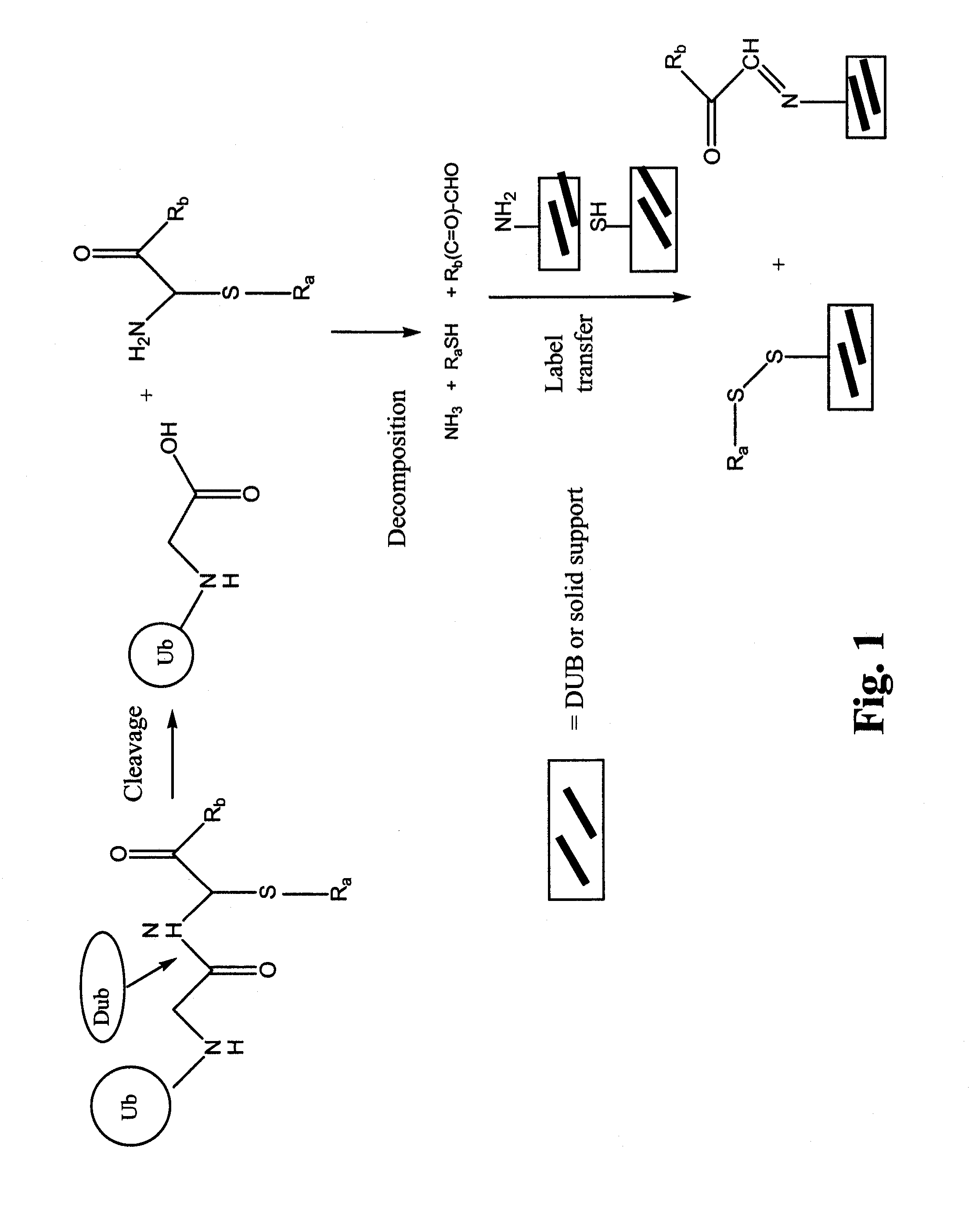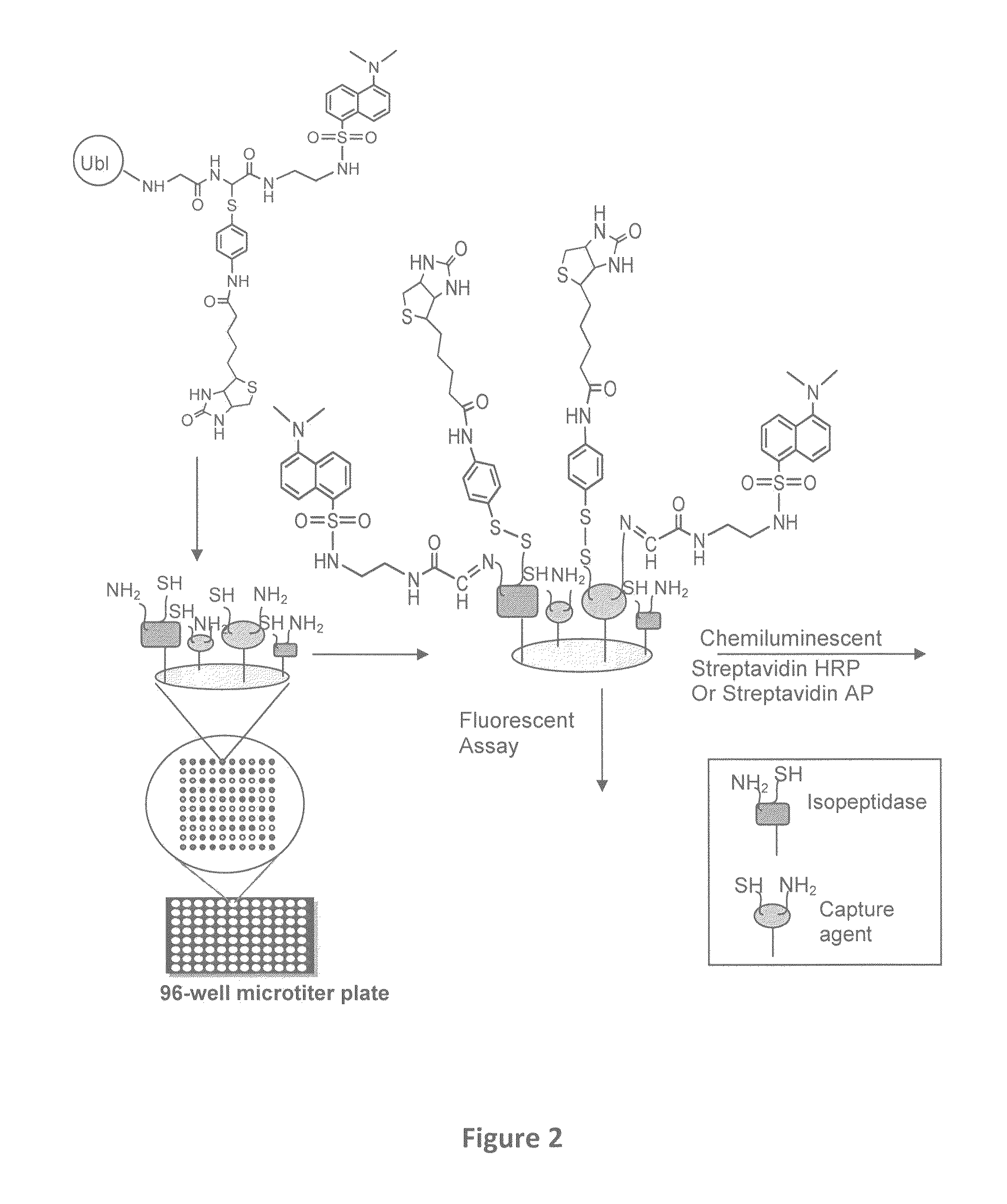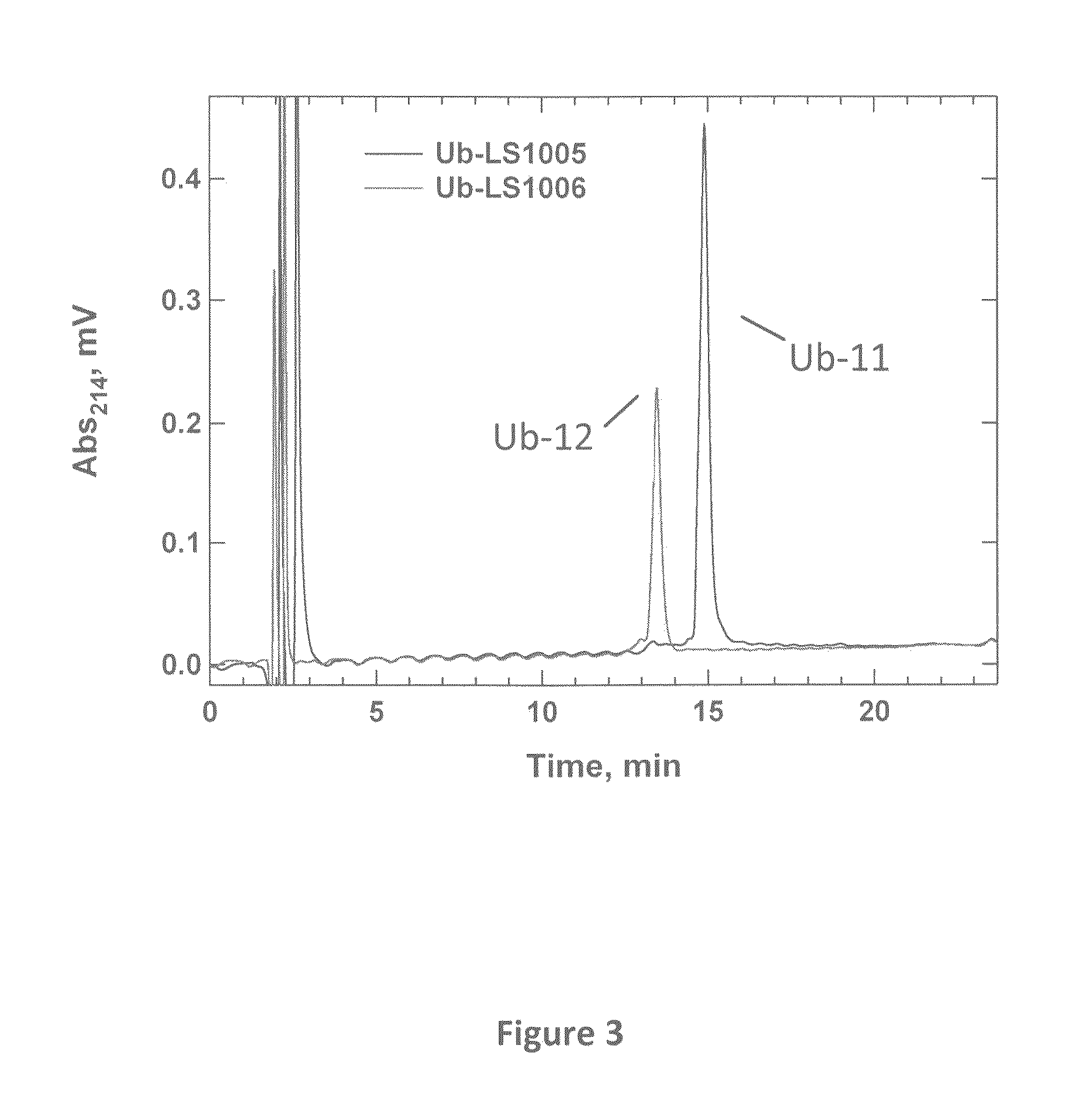Synthetic protease substrates, assay methods using such substrates and kits for practicing the assay
a technology of synthesized protease and substrate, applied in the field of molecular biology, can solve the problems of not being able to achieve the effect of improving specificity and solubility, data only beginning to scratch the surface of ndd research, and still needing substantial amount of work to uncover all
- Summary
- Abstract
- Description
- Claims
- Application Information
AI Technical Summary
Benefits of technology
Problems solved by technology
Method used
Image
Examples
example 1
Synthesis and characterization of 5-(2-(2-(2-aminoacetamido)-2(phenylthio)acetamido)ethylamino)naphthalene-1-sulfonic acid (10)
[0078]A mixture of Cbz-Gly-NH2(1) (1.0 g, 4.8 mmol) and glyoxylic acid monohydrate (0.56 g, 6 mmol) in acetone (25 mL) was heated at 50° C. for 72 h. The acetone was evaporated under reduced pressure and the residue was purified by RP-HPLC to give 0.53 g (39%) of product (2). ESI-MS m / z 283.2 (M+1)+
[0079]A solution of 2 (0.75 g, 2.7 mmol) in acetic acid (17 mL) was cooled in ice and thiophenol (0.6 mL, 5.4 mmol) was added followed by 0.9 mL of sulfuric acid. After stirring at room temperature for two days, the mixture was poured onto ice and extracted with ethyl acetate. The ethyl acetate solution was washed with saturated sodium bicarbonate, with water and dried over MgSO4. The ethyl acetate was evaporated under reduced pressure and the residue was purified by RP-HPLC to give 0.56 g (56%) of product (3). ESI-MS m / z 375.4 (M+1)+
[0080]To a solution of 3 (0.1 ...
example 2
Synthesis and Characterization of 2-(2-aminoacetamido)-N-(2-(5-(dimethylamino)naphthalene-1-sulfonamido)ethyl-2-(phenylthio)acetamide (11)
[0082]To a solution of 3 (0.060 g, 0.16 mmol) in dry DMF (20 mL) were added DIPEA (0.010 mL), Dansyl ethylendiamine (0.065 g, 0.22 mmol), EDC (0.036 g, 0.19 mmol) and NHS (0.022 g, 0.19 mmol). After stirring at room temperature overnight, the solvent was removed under reduced pressure and the residue was dissolved in DMSO and purified by RP-HPLC to give 0.083 g (80%) of product (8). ESI-MS m / z 650.69 (M+1)+.
[0083]Removal of the Z group was accomplished in quantitative yield as described before. The mixture was evaporated under reduced pressure and the residue was dissolved in DMSO and purified by RP-HPLC to give the desired product 11. ESI-MS m / z 516.55 (M+1)+.
example 3
Synthesis and Characterization of N-(2-(2-(2-aminoacetamido)-2-(phenylthio)acetamido)ethyl-5-(2-oxohexahydro-1H thieno[3,4-d]imidazol-4-yl)pentanamide (12)
[0084]To a solution of 3 (0.10 g, 0.27 mmol) in dry DMF (2 mL) were added DIPEA (0.053 mL), Biotin ethylenediamine, hydrobromide (0.118 g, 0.32 mmol), EDC (0.061 g, 0.32 mmol) and NHS (0.037 g, 0.32 mmol). After stirring at room temperature for 3 days, the solvent was removed under reduced pressure and the residue was dissolved in DMSO and purified by RP-HPLC to give 0.085 g (49%) of product (9). ESI-MS m / z 643.17 (M+1)+.
[0085]Removal of the Z group was accomplished in quantitative yield as described before. The mixture was evaporated under reduced pressure and the residue was dissolved in MeOH and filtered through silica to give the desired product 12. ESI-MS m / z 509.11 (M+1)+.
PUM
| Property | Measurement | Unit |
|---|---|---|
| Volume | aaaaa | aaaaa |
| Volume | aaaaa | aaaaa |
| Fraction | aaaaa | aaaaa |
Abstract
Description
Claims
Application Information
 Login to View More
Login to View More - R&D
- Intellectual Property
- Life Sciences
- Materials
- Tech Scout
- Unparalleled Data Quality
- Higher Quality Content
- 60% Fewer Hallucinations
Browse by: Latest US Patents, China's latest patents, Technical Efficacy Thesaurus, Application Domain, Technology Topic, Popular Technical Reports.
© 2025 PatSnap. All rights reserved.Legal|Privacy policy|Modern Slavery Act Transparency Statement|Sitemap|About US| Contact US: help@patsnap.com



